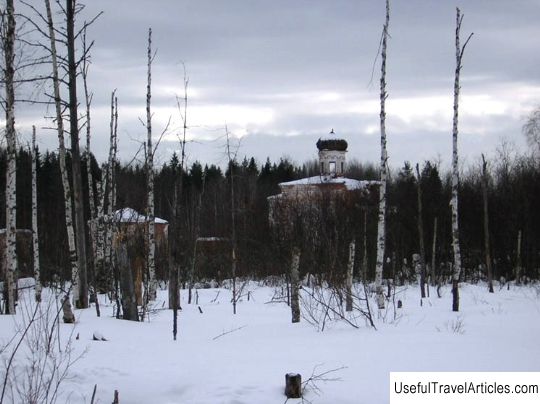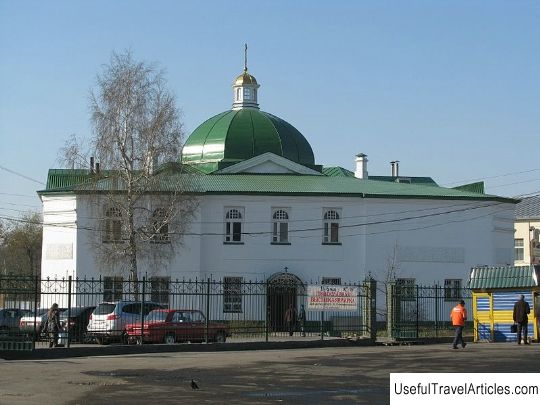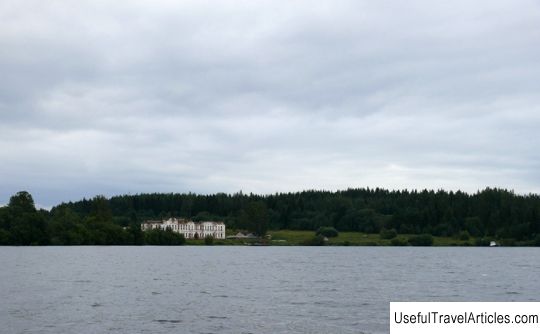Iono-Yashezero monastery description and photos - Russia - Karelia: Yashezero
Rating: 8,5/10 (1039 votes) 
Ion-Yashezero monastery description and photos - Russia - Karelia: Yashezero. Detailed information about the attraction. Description, photos and a map showing the nearest significant objects. Photo and descriptionThe Iono-Yashezersky monastery is one of the most ancient monasteries located on the territory of the Republic of Karelia. The founding of the monastery took place during the reign of Ivan the Terrible. In 2002, the Annunciation Monastery celebrated the 440th anniversary of its founding. The male monastery is closer than other monasteries to the capital of Karelia, in addition, this is the only surviving monastery of this kind. The monastery is located 80 km from the famous city of Petrozavodsk, on the shore of Lake Yashezero, 17 km from the village of Shoksha.The Annunciation Monastery is one of the most significant and popular monuments of history and architecture. It is the second most important in the territory of the Karelian Republic, after Valaam, a monument of monastic monumental architecture. Ancient legends preserved the memory of two universally famous Vepsian saints, who were especially revered and revered by the Orthodox Church in Russia. One of the saints was the Valaam monk Alexander Svirsky, and the other was his student, Ion Yashezersky. These people were the founders of the monastic cloisters so famous throughout Russia, which were named after them. The Monk Iona was a Vepsian by nationality and lived in the nearby village of Shokshi near the calm Yashezer. This place of residence was not chosen by him by chance, because it was here that the ancient pagan temple was located. A monastery was built on the site of the former temple in memory of the victory of the Orthodox faith over ancient paganism. For many years the monk carried out a difficult apostolic ministry among the strata of the Veps people. The fate of the northern desert dwellers was not easy: long cold winters, eternal winds and fogs, monotonous food, represented by roots, berries, moss, herbs and mushrooms. People longing for solitude went to the Monk Jonah in order to spend their lives in labor, prayer and fasting. The Lord God informed Jonah about the coming of his death. He retired to a small, separate cave a couple of kilometers from the monastery and spent the last years of his earthly life in this place, constantly fasting and reading prayers. According to ancient sources, Iona died at the age of more than a hundred years in 1629. The cave of Ion Jashezersky was especially revered by all members of the monastery, as well as by local residents. The old residents of these places still say that a stone table and a stone bed were preserved in the cave for a long time. For a long time people come to this place to pray for healing from serious ailments and diseases. In the cave, without extinguishing, a lamp burned, the flame of which was constantly watched by the pilgrims. Not far from the cave of the saint, a chapel was built, which was completely destroyed during the years of Soviet power. In 1675, a cathedral church was built at the monastery, named in the name of the Annunciation of the Most Holy Theotokos, the limit of the saint was Nicholas the Wonderworker. The decoration of the monastery was the stone church of the Transfiguration of the Lord, which was erected in 1853 over the grave of the monk. During the existence of the Yashezerskaya Hermitage, noble royal persons helped her a lot. Land contributions from tsars Vasily Shuisky, Fyodor Ivanovich, nun Martha and abbots of the Solovetsky temple Irinarch and Jacob passed into the possession of the brethren. At the beginning of the 20th century, about two hundred people of the brethren got involved in the Yashezero desert. Several times a week, ships with a large number of pilgrims on board sailed from the Voskresenskaya embankment of the city of St. Petersburg. Mooring to the pier was carried out the next day; the pier was located 26 versts from the desert itself. In modern times, very little has come down to us from the ancient monastery, which was especially revered throughout the north-west: some part of the monastery fence made of crimson quartzite, the temple of the Transfiguration of the Lord, two modest monastery buildings, as well as four corner towers made of stone. The Annunciation Cathedral Church, the refectory and the abbot's chambers were subject to complete destruction. Those few buildings that have remained from those times         We also recommend reading Tiger Sky Tower description and photos - Singapore: Sentosa Topic: Iono-Yashezero monastery description and photos - Russia - Karelia: Yashezero. |




